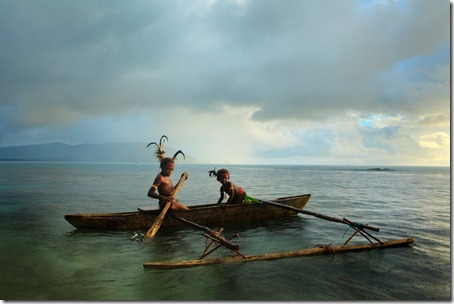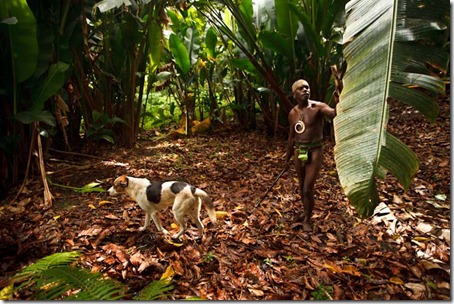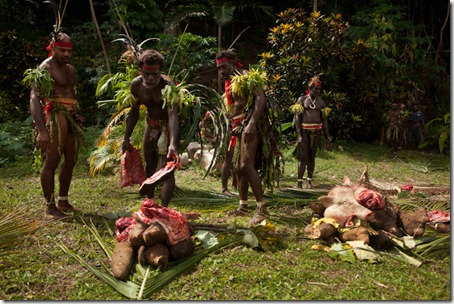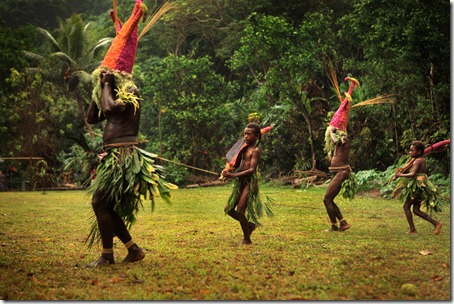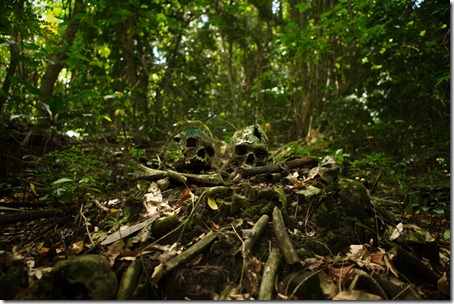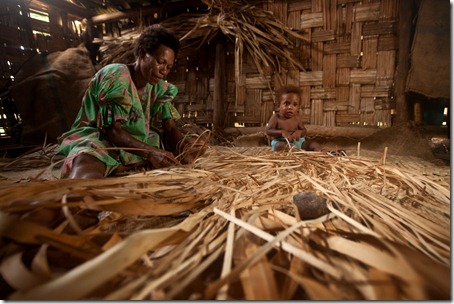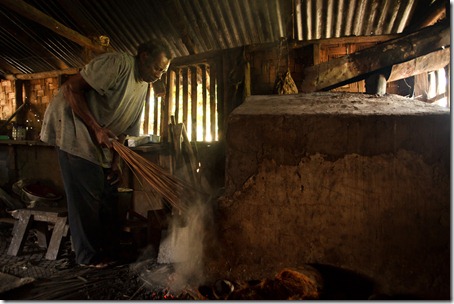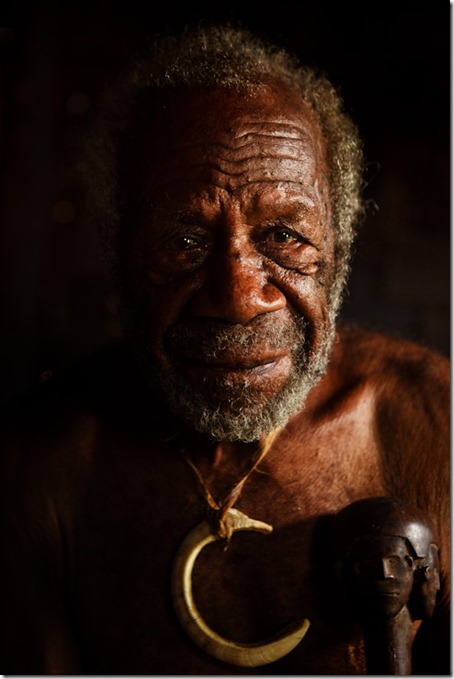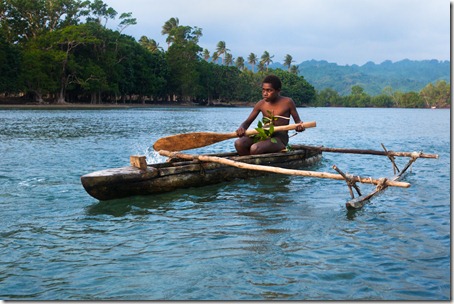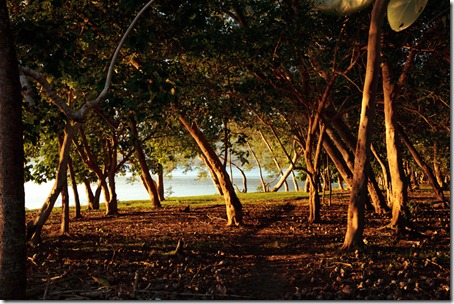South West Bay, Malekula – Where pristine nature meets ancient traditions
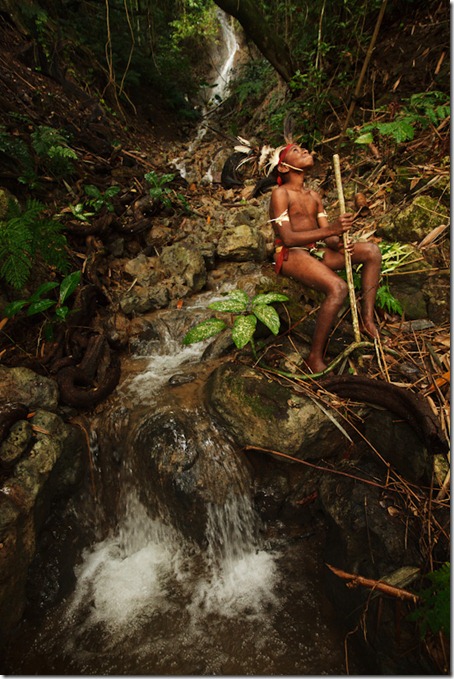 A few posts ago I mentioned that I got involved in helping some locals with the promotion of their regions as tourism destinations through my photographs. In fact I not only ended up doing the photos, but also dished out quite a lot of advice, since the people on most islands of Vanuatu (besides two main ones – Vila and Santo), well they don’t have much of an idea of what foreigners actually want and their misconceptions could not be further from the truth. That is of course very understandable, since their culture and general approach to life could not be much more different from that of “white people” or most foreigners in general.
A few posts ago I mentioned that I got involved in helping some locals with the promotion of their regions as tourism destinations through my photographs. In fact I not only ended up doing the photos, but also dished out quite a lot of advice, since the people on most islands of Vanuatu (besides two main ones – Vila and Santo), well they don’t have much of an idea of what foreigners actually want and their misconceptions could not be further from the truth. That is of course very understandable, since their culture and general approach to life could not be much more different from that of “white people” or most foreigners in general.
For the moment and likely for at least five years or more, most of outer islands of Vanuatu (as all the islands outside of Efate where the capital is located are called) are pretty darn far from being “real” tourist destinations. I mean this in the sense that they are not particularly suitable for those who want to relax in comfort, eat well, drink or party. Outside of about three major towns, there’s no electricity, running water is very uncommon and perhaps the most painful thing, at least for me, is that the locals, for most part could not care less about what they eat. There’s no food culture, which equals to no tasty local cuisine as you get in most places around Asia or elsewhere where there is a food culture.
All the minuses aside, Vanuatu offers something that few places offer these days and that is untouched, pristine and absolutely stunning nature. On top of that the people (the Ni-Vanutatu or Ni-Vans, as they call themselves) are some of the most charismatic, friendly and likeable on the planet. There’s also no hassle, no one attempts to sell you crap that you don’t need, no one tries to trick you or rip you off. As much as I love places like India, Nepal and Indonesia, it gets pretty annoying when people constantly see you as a money bag and come up with the most ridiculously creative ways of making you part with your money. You just don’t have that in Vanuatu, at least not yet.
Besides the already mentioned virtues, there’s of course the culture. As I also mentioned in a past post, the culture is undeniably disappearing, but it hasn’t disappeared yet, at least not everywhere. And while there are still places where you can experience this incredible culture in at least some shape or form, you have to go. In some very strange way it appears that the foreign interest in the culture of Vanuatu’s islands has made a lot of Ni-Vans realize just how precious their culture is. At the end of the day, it may very well be tourism which will help ensure that not all is completely lost.
But let me now get specifically to South West Bay. It is one of two regions which I photographed with the aim of helping promote it. As you might have already gathered I am also ready to promote it through my blog and the internet in general, but that doesn’t mean that I’m simply going to sugar-coat everything. I’ll tell the truth, and in this case the truth is good enough to get people to come.
My idea to do this little project came after I met a good man by the name of George Thompson. George was born and grew up in the very remote South West Bay, Malekula. Through some visionary thoughts, hard work and twists of fate he was able to become the leading tour operator and the head of the tourism department in his region. This role even gave George an opportunity to travel to Europe for a tourism expo in the late nineties. He saw places that very few Ni-Vans get to see – France, Germany, Denmark. While he loved the experience, travelling abroad made him realize that things back home were not as bad as some of his fellow countrymen had imagined. Sure, Vanuatu is a poor country by Western standards, but paradoxically there are no homeless people and no one begs for money or food. On top of that the air is fresh and the culture is rich.
When George got back, he had become even more inspired and passionate about showing off his region to the occasional tourists. By 2000 things were looking good, tourist numbers were slowly growing and the income that tourism provided made people’s lives just a little easier. However, things in Vanuatu can change rather quickly. Corruption and “mismanagement” of funds at the higher level are common and around 2004 the nationwide tourism company “Island Safaris” the branch of which George led successfully in South West Bay went down due to “mismanagement”. Tourism numbers started to decline faster than they rose, without the support of a bigger company there was no way that George or the locals could market their region to the outside world. To add even more pain to the dilemma, the airport of South West Bay was sporadically closing and opening, thus making it harder for anyone to get to the area. In a couple of years there were virtually no tourists visiting South West Bay.
Because of George’s past friendships and connections he was able to get a good job, managing a small resort in Port Villa. He had a relatively easy life and a high salary, by Vanuatu standards. George worked at the resort for a couple of years, but soon he became haunted by the thoughts of home. He was away from his family and he knew that while he was having it easy, the people of South West Bay were struggling. He felt pain and guilt and before long he got back to South West Bay with the hopes of reviving the small, but once stable tourism industry that he helped build.
Fast forward to 2010 and things are not looking so bright. Over the past few years tourism has still been near non-existent. Instead of helping bring up the lifestyle of others, George found himself in a similar situation as them. He didn’t tell me his story when I met him, he’s not the kind of person to whine or complain about life, that doesn’t seem to be part of the Ni-Van mentality in general. Instead I got all of this information out of him during the two weeks that I spent in the area, this of course made me even more motivated to help the man in at least some way.
The particular idea about me making some photos came after George showed me some of the past photos of the places in his region sent to him by tourists. According to his stories, the places were beautiful and the people in those places fascinating and so when I saw images that were let’s say not very inspiring I felt a little uninspired myself. I know that I’m not the only one who gets excited about a place by seeing a single beautiful image of it and so with that thought in mind I suggested that we create a little tourism marketing campaign. The campaign would be a combination of documentary images of some of the more photogenic activities, places in the region, as well as some set up shots of the locals dressed in their traditional costumes in their beautiful surroundings.
For me personally the shoots were a reward in themselves. I have been shooting documentary stuff for years and I’m always interested to be placed into new photogenic situations. As far as the set up shots, it was in a sense even more fun to do them. I’d made a couple of short fiction films while at uni and photo shoots of this sort, while fairly new to me were in a some ways similar to making short films. In this case you could say that the shoots were a blend of fiction and documentary (the line was very thin). Our “actors” had to be themselves, they simply had to be in specific locations, wearing costumes which they used to wear in the past and still wear during celebrations or as was customary for the chiefs and some village members while greeting visitors (i.e. tourists). The dances, which are a big thing in the region are performed in similar outfits, (usually more elaborate) so all in all the images we created showed what was most visually exciting about the region of South West Bay and something that the visitors would get a chance to see themselves.
And so let me get to the photos. This is a just a portion of the images I created, you can see more HERE and in the coming months. The image at the top is of one of the boys (Pillison was his name) who I had seen performing the kastom dance at a pig killing ceremony a couple of days earlier. I wanted to photograph him in a similar costume in front of the waterfall, one of the hidden little gems of the area.
Pillison was a great model so we got him and his little mate into a canoe and asked them to row along the shoreline a little. For full impact, I expect this or a variation of this image to be shown in a bigger medium than the 450 pixel photo on a blog. You can get a better view by clicking on the image (to make it larger). Mountains and sea always look dramatic to me and more so when they’re bigger.
This is Chief Ayar again. I blogged about him HERE. I took quite a few shots of this fascinating man. I expect that some of them will be used in something like a brochure, while I’d like to use others, like this one along with images that make up a story, which, if things work out will hopefully appear in some of Vanuatu’s tourism magazines.
A moment from the pig-killing ceremony. During my stay in South West Bay, two chiefs “upgraded” their ranks. Two pigs were killed and meat was shared with the villagers.
Every pig killing is preceded by a traditional or kastom dance. Only certain individuals are allowed to take part. The young are once again being taught the steps of the dances as part of a cultural revival in South West Bay.
For those who like hiking, there’s a fascinating hike to the creepy ancient burial site in the hills above the village of Melmes. The guide, a young chief by the name of John was very passionate in telling us about the history of his people. Below those skulls is a mass burial hole, but before the bodies were placed there they were put onto a high rock. Because John’s tribe thought that they descended from the eagle, they had a little custom associated with this bird. They believed that if the eagle were to eat the eyes of the dead body (when it was placed on the high rock), that person would go directly to paradise, if not, well they go to hell. When I asked John whether many of the dead actually had they’re eyes eaten and went to Paradise, he replied with an uneasy smile – “No, most of our ancestors went to hell.”
Mat-weaving is one of the women’s main occupations. They weave mats for home as well as for sale in big towns like Port Villa in order to generate a small income that usually contributes to the ridiculously high school fees they must pay for their children each year.
Another documentary image taken inside of the village bakery. The baker is cleaning out the ash before putting the bread inside the oven. Once I am home, near a fast connection I’ll try to post some video that I did in this very atmospheric little spot.
George’s uncle is one of the highest chiefs in South West Bay, people like him are an “attraction” in their own right, they are living history and chatting to folks like that is always a highlight of any trip. George’s uncle (his name escapes me, it was a long traditional name, not a Western one) had never had a white man in his house before, so he felt a little nervous when I came to photograph him there. He still had reservations about white people in general because in his youth the presence of a white man was usually bad news. He signed to me that they used to kill the locals by making the cutting of a neck gesture with his hand.
My presence I was sure left him pretty puzzled. I was using the off camera flash in a soft box, which meant that I’d click the button on the camera and the flash would go off (away from the camera). George later confirmed that the flash was indeed a source of bewilderment and amusement as his uncle told fellow elders “This white man came to take my picture. He pressed the button in one place and then this bright light would go off in another place! He’d talk to his woman, she’d press something on the thing that makes the light and then the same thing would happen again, over and over!”
South West Bay is stunningly beautiful. I am not a landscape photographer, but even I was seduced by the scenery of dramatic, red, cliffs and greenery lining the shore. There are much more scenes for the landscape photographer and if I was one of them I’d probably stay even longer.
More beautiful nature (click the image for larger size) and another youngster in a canoe. This is in fact a lagoon about a half hour’s walk from George’s house. Beautiful place, warm people and you only have to dip the net in for a few minutes before you catch fish. Once the traditional owner of this area builds a thatched bungalow, this will be a great place to spend a couple of days.
Just a few hundred meters from the lagoon, you come to this place, which made me feel a little like I was in a forest in Europe. The setting sun made for a perfect lighting scenario and I couldn’t resist making a couple of exposures.
Some final words: For those who are into photography and interested in visiting Vanuatu there are some good news. Through working with me George learned a good bit about what sort of stuff more serious photographers might be interested in. In other words he knows that we don’t like cheesy pictures of kids giving us the thumbs up (very common in Vanuatu) or people standing with their hands by their sides like soldiers before a march. He also understands that sometimes real life is the most fascinating subject of all, so he can help the photographers get access to shoot stuff like that.
I might be doing a workshop in Vanuatu at some stage and if I do there will only ever be one. However for the more independent minded or more advanced photographers, I highly recommend you to get over to South West Bay and to let George show you around. I’ve only scratched the surface here. There’s reportedly a great reef for those who love shooting underwater (I had left my housing near the airport not knowing this) you can go on a wild pig hunt with a couple of dudes with bush knives and a pack of dogs. There are more traditional villages and fascinating elders in the mountains and some folks shoot river fish with bows and arrows.
Oh and did I mention that the whole thing will be extremely affordable, especially by Vanuatu standards? Whatever you pay will go directly to the community, there are no middle-man organizations (as is often the case when you do things through bigger companies). I don’t get anything out of it apart from satisfaction in knowing that I helped someone. I’ll post more on the prices and the possibilities at a later stage, but if anyone is already interested, feel free to contact me via this blog or the email on my website.
